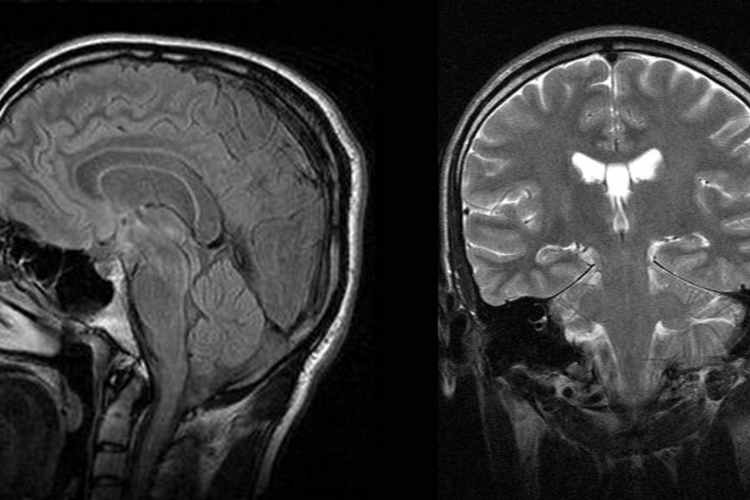In this blog we are going to tell you about DIFFERENCE BETWEEN NARCOLEPSY BRAIN AND NORMAL BRAIN, so read this blog carefully to get the complete information.
Narcolepsy, also known as ” sleep attacks”, is a chronic neurological disorder affecting the brain’s control of a person’s sleep and insomnia habits. Almost one in 2000 Americans suffer from narcolepsy. The condition impacts both males and females.
TYPES OF NARCOLEPSY:
- Type 1:- narcolepsy is defined as excessive daytime sleepiness with cataplexy and low levels of orexin.
- Type 2:- narcolepsy is defined as excessive daytime sleepiness, a lack of cataplexy, and normal levels of orexin.
- Secondary narcolepsy is constantly an impact of injury to the hypothalamus, a brain area that helps with regulating sleep. It may involve serious neurological problems and excessive sleep (more than 10 hours) in the normal symptoms of narcolepsy.
SYMPTOMS OF NARCOLEPSY
The common symptoms of narcolepsy are:-
- Lack of concentration, memory lapses, upset mood, low energy, extreme fatigue, etc mental impairments.
- Daytime sleepiness affects mental health.
- Of the people affected by narcolepsy 70%. They experience a quick loss of muscle stamina, known as cataplexy. Cataplexy may be inaccurate for attacks(NINDS) and can stay from a few seconds to some minutes.
- During the attack, the person remains conscious. The number of attacks can vary from a few in a lifetime to various a day.
- The person may get sleep paralysis is a condition of the incapability to walk or speak before falling asleep. This lasts from a few seconds to minutes.
- The situation often includes disrupted sleep during the night as well as sudden entry into the nightmare state. Generally, a person starts to dream and enters rapid eye movement(REM) sleep after nearly 60 to 90 minutes; people who are suffering from narcolepsy always enter REM sleep within 15 minutes of falling asleep.
- Sleep may also be disturbed by hypersomnia, lucid dreaming, and obstructive sleep apnea(OSA).
- The narcoleptic person may suffer from lucid anxious visions that happen before falling asleep (hypnagogic hallucinations) or after waking up (hypnopompic hallucinations). Hallucinations are optical but can affect all the senses.
RELATED – How Does Home Care Work?
CAUSES OF NARCOLEPSY
In understanding the causes of narcolepsy some progress has been made over the last 20 years. One justification is hereditary and facts to the action of groups of neurons in various parts of the brain that interact to sleep control. A similar justification is the loss of a neurotransmitter, particularly hypocretin. Hypocretin is essential for operating the sleep-wake cycle involving rapid eye movement (REM) during sleeping. A deficiency of hypocretin causes excessive sleepiness and during wakefulness the features of REM sleep become present.
The changes between wakefulness, REM, and NON REM sleep can happen when the neurons disappear, they happen to sleep fragmentation, and people with narcolepsy may experience daytime symptoms. This is supposed to be the primary cause of type-1 narcolepsy.
Scientists are doubtful about why hypocretin neurons die. Few recommend that narcolepsy is due to an autoimmune disorder that damages the brain cells which generate hypocretin because of higher-than-normal levels of anti-streptolysin O antibodies in narcolepsy people. The seasonal beginning of narcolepsy ensures the autoimmune system explanation: After the winter season, the people have more symptoms. In 2009, the H1N1 influenza epidemic was associated with an increase at the beginning of cases of narcolepsy.
Family history plays a role. Approximately 10% of people with narcolepsy have close families with the same symptoms, while they may contribute to the presence of pesticides and environmental toxins, such as secondhand smoke, and heavy metals.
In a few examples, narcolepsy may happen from damage to the area of the brain that regulates REM sleep and wakefulness, for example, tumors in those regions or trauma, or disease.
DIAGNOSIS and MEDICATION
Diagnosis is based on symptoms and sleeps analyses after first ruling out different physical disorders (apnea, anemia, heart failure), behavioral disorders (drinking alcohol and not getting enough sleep), and mental disorders (major depression), which are further related to excessive daytime sleepiness.
Medications used to deal with narcolepsy involve wake and sleep-enhancing medications such as antidepressants and stimulants. Lifestyle changes like reducing electronic devices from the bedroom, preventing heavy meals and stimulants many hours before bedtime, exercising early in the morning, relaxing before bedtime, and ascertaining a regular sleep/wake habit. If a person is suffering from narcolepsy they are advised not to drive or take a nap before driving and drive short distances at a time to keep engaged while driving.
DIAGRAM OF DIFFERENCE BETWEEN NARCOLEPSY BRAIN AND NORMAL BRAIN
| Normal brain | Narcolepsy brain | |
| Brain Physiology | Reliable cortex | Cortical thinning |
| Cognition | Clear | Foggy |
| REM sleep | 60 to 90 minutes | 15 minutes |
The FINAL END
Narcolepsy, also known as ” sleep attacks”, is a chronic neurological disorder affecting the brain’s control of a person’s sleep and insomnia habits. Common symptoms of narcolepsy are Lack of concentration, memory lapses, upset mood, low energy, extreme fatigue, etc. mental impairments.
RELATED – Self-Help Tips to Help You Live a More Fulfilling Life
Conclusion
We Hope this blog is sufficient enough to provide the information about NARCOLEPSY BRAIN AND NORMAL BRAIN. Thanks for reading this blog.

